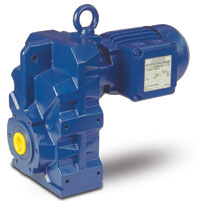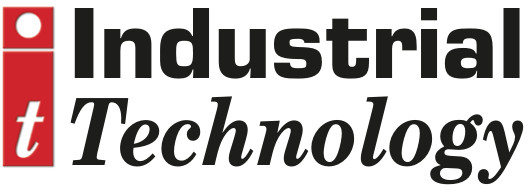
Posted to News on 23rd Nov 2018, 00:00
Gear motors make timber production faster and cleaner
Timber trade is driven by a wide range of factors, including cost and the availability of specific varieties and product types. Increasingly, however, end-users are interested in the quality and environmental sustainability of their timber sources. The industry has developed robust ‘chain-of-custody’ systems that allow products to be tracked all the way from forest to final use.

For participants in the supply chain, meanwhile, there are also strong incentives to optimise the environmental performance of their operations. That’s driving changes in the technologies incorporated into the specialist equipment used to harvest, transport and process timber products. One key trend is the replacement of hydraulic actuators with electrically-powered systems. Once the mainstay of heavy lifting and handling equipment systems, hydraulic power is steadily falling out of favour in the forestry sector. In part, that’s due the risks associated with fluid leaks, which can contaminate the environment and spoil valuable product.
Modern high-powered electrical actuators provide additional advantages too. These systems typically replace a hydraulic cylinder with an assembly that includes a geared motor and a ball or roller screw to create linear motion. They tend to be more robust, require less maintenance and provide enhanced control accuracy compared to their hydraulic counterparts.
When one lumber-handling equipment manufacturer needed a robust electric geared motor solution to replace hydraulic cylinders on its tilt hoists, it turned to Bauer Gear Motor for a solution. Tilt hoists are a key component of large-scale lumber production. During operation, full bundles of stacked, rough-cut lumber are moved onto the hoist. The entire bundle is then lifted and tilted. As the tilted hoist slowly raises the bundle, single layers of boards are released from the top of the bundle and slide onto a feeder conveyer.
In this application, the customer wanted to adapt an existing design, replacing the hydraulic cylinders that controlled the hoist’s tilt motion with electrically actuated ball screws. A motor and gearbox solution was needed that would deliver equivalent force and speed. The customer also needed confidence that the system would operate reliably in the timber processing environment, where components can be exposed to high levels of dust, moisture and other contaminants.
To meet the customer’s application requirements, Bauer recommended its BF60 parallel shaft gear motors, with two 22kW units installed on each hoist, driving long ball screws. The electric gear motors combined with the ball screws provide a more precise, controlled movement of the hoist compared to hydraulic cylinders. And, of course, possibility of damaging fluid leaks and cylinder creep/drift are also eliminated.
BF Series gearboxes feature high-tensile, case-hardened steel gearing with strong, non-flexible pinion design and over-sized input bearings to ensure exact tooth meshing and longevity of the gearbox. Those specifications mattered to the customer, since the transmission in the hoist would have to resist high peak loads during loading and unloading operations. To reduce the risk of impact damage, the gearing is enclosed within a thick, reinforced, high-tensile cast housing.
Another priority of the customer was to ensure that lubricating oil would not escape from the mechanism and contaminate the working environment. The Bauer BF60 units met its requirements as they feature a 3-piece labyrinth input seal to protect against oil leakage in any orientation. The efficient seals also serve to reduce the risk of dust or moisture ingress into the gear mechanism or motor. Like all Bauer motors, the BF60 units used in this application are IP65 rated as standard, making them suitable for prolonged operation in dusty environments and when exposed to jets of water.
An aluminium die-cast cage rotor ensures high reliability at high starting torques and low starting currents – a significant benefit in crane and hoist applications where the highest torques may be required at zero speed as a load is accelerated from a stationary position.







